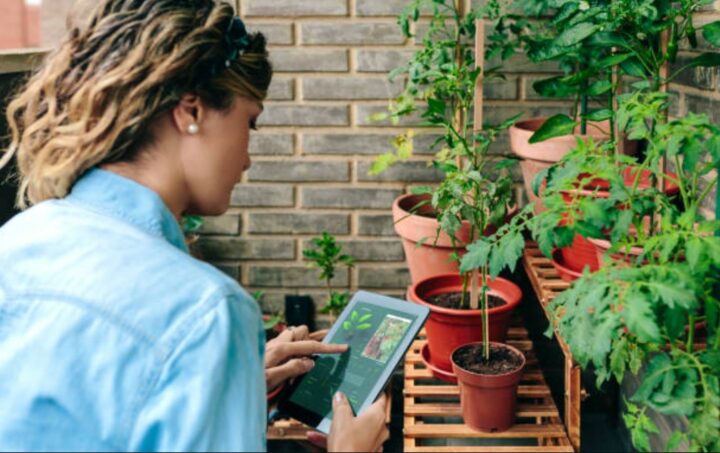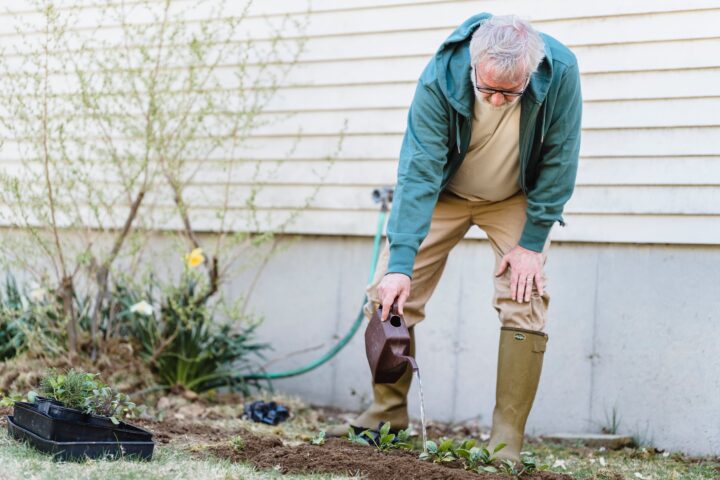 In the modern era, plant care has transcended the traditional realm of soil, water, and sunlight. Thanks to the marvels of technology, enthusiasts and novices alike can now turn to plant care apps for comprehensive guidance on nurturing their leafy companions. This exploration delves into the world of plant care applications, uncovering their diverse features, benefits, and the essential role they play in fostering healthy and thriving green spaces.
In the modern era, plant care has transcended the traditional realm of soil, water, and sunlight. Thanks to the marvels of technology, enthusiasts and novices alike can now turn to plant care apps for comprehensive guidance on nurturing their leafy companions. This exploration delves into the world of plant care applications, uncovering their diverse features, benefits, and the essential role they play in fostering healthy and thriving green spaces.
Unlocking Nature’s Secrets
For iPhone users seeking to unravel the mysteries of the plant kingdom, a plant identifier app for iPhone is an indispensable tool. This application harnesses the power of image recognition technology to identify plants based on photographs taken by users.
By capturing a snapshot of a plant’s leaves or flowers, users can receive instant information about its species, care requirements, and unique characteristics. This not only satisfies curiosity but also empowers users to provide tailored care, ensuring their green companions flourish.
Exploring the Best Plant Care Applications
- Plnt Application: Leading the pack as the premier plant care app, Plnt stands as a testament to digital innovation in the realm of gardening. Boasting a user-friendly interface and a vast database, Plnt covers a spectrum of features, including plant identification, care tips, and personalized guidance based on individual plant needs. With a focus on accessibility and reliability, Plnt takes the crown as an essential tool for plant enthusiasts of all levels.
- GardenTags: Catering to a vibrant community of gardeners, GardenTags is more than just a plant care app; it’s a social hub for green thumbs. Users can connect with fellow plant enthusiasts, share their gardening triumphs, and seek advice on plant-related queries. In addition to plant identification tools, GardenTags offers a gardening journal, allowing users to document and track the progress of their plants over time.
- PlantSnap: Renowned for its cutting-edge image recognition technology, PlantSnap is a go-to app for those looking to identify plants effortlessly. Users can snap a photo of a plant, and the app provides detailed information about its species, care requirements, and even its native habitat. PlantSnap’s extensive database ensures accurate identifications, making it a reliable companion for plant enthusiasts on their botanical journeys.
- FlowerChecker: Merging artificial intelligence with the expertise of a global network of botanists, FlowerChecker offers a unique identification experience. Users submit photos, and within a short timeframe, receive a detailed report on the identified plant along with personalized care advice. This blend of technology and human knowledge sets FlowerChecker apart in the world of plant care applications.
- Leafsnap: Tailored for tree enthusiasts and nature lovers, Leafsnap focuses on the identification of trees based on leaf images. Developed by researchers, this app utilizes visual recognition software to discern tree species. With a comprehensive database and a commitment to education, Leafsnap is an excellent resource for those passionate about woody plants and arboreal landscapes.
Features That Set Plant Care Applications Apart
Beyond their shared goal of enhancing plant care, these applications distinguish themselves through unique features designed to cater to the diverse needs of users:
- Plant Identification: The core feature of plant care applications is their ability to identify plants accurately. Users can snap photos, submit them to the app, and receive instant information about the plant’s species, common names, and botanical details.
- Personalized Care Tips: Many applications go beyond identification, offering personalized care tips based on the identified plant’s specific requirements. This includes guidance on watering schedules, sunlight exposure, soil preferences, and any potential pests or diseases to watch out for.
- Community Engagement: Some applications, like GardenTags, foster a sense of community by connecting users with fellow plant enthusiasts. This social aspect allows individuals to share experiences, seek advice, and celebrate their gardening successes together.
- Botanical Education: Applications such as Leafsnap and FlowerChecker contribute to botanical education by providing detailed information about plant species. Users can delve into the intricacies of plant anatomy, learn about native habitats, and deepen their understanding of the natural world.
How Plant Care Applications Revolutionize Gardening Practices

- Accessible Plant Knowledge: Plant care applications democratize botanical knowledge, making it accessible to individuals regardless of their expertise. Novice gardeners can quickly learn about different plants, while experienced enthusiasts can deepen their understanding of specific species.
- Efficient Problem-Solving: When faced with a sick or struggling plant, users can turn to these applications for efficient problem-solving. The identification of pests, diseases, or nutritional deficiencies becomes a streamlined process, enabling timely intervention and care adjustments.
- Inspiration for Green Spaces: Beyond problem-solving, plant care applications inspire users to explore new plants and experiment with diverse greenery in their spaces. The ability to identify and understand various plants encourages a dynamic and ever-evolving garden.
- Environmental Conservation: By promoting knowledge about native plants and their ecological roles, these applications contribute to environmental conservation efforts. Users can make informed choices about plant selections that align with local ecosystems, fostering biodiversity and sustainability.
Considerations When Choosing a Plant Care Application
Selecting the right plant care application is a pivotal decision that can significantly impact the well-being of your green companions. To ensure you make an informed choice tailored to your gardening needs, consider the following aspects:
- Plant Database Accuracy: Evaluate the accuracy and comprehensiveness of the plant database. A robust database ensures that the application can identify a wide array of plant species, providing precise information about each.
- User-Friendly Interface: Opt for an application with an intuitive and user-friendly interface. A well-designed app enhances the overall user experience, making it easy to navigate through features, access information, and interact seamlessly with the application.
- Personalization Features: Look for applications that offer personalized care tips based on the specific needs of each plant. Customized recommendations for watering, sunlight exposure, and other care aspects contribute to the health and vitality of your greenery.
- Community Engagement: If you value community interaction, consider applications that foster a gardening community. Being able to connect with fellow plant enthusiasts allows for shared experiences, advice, and inspiration, creating a supportive digital gardening ecosystem.
- Offline Functionality: Check if the application offers offline functionality. This feature can be particularly beneficial for users who may not always have a stable internet connection, ensuring that plant care guidance is accessible even in remote or garden-centric locations.
- Educational Resources: Assess the availability of educational resources within the application. Features that provide in-depth botanical information, gardening tips, and insights into plant anatomy can enhance your understanding of the plant kingdom and contribute to a more enriching gardening experience.
- Regular Updates: Choose an application that receives regular updates. A well-maintained app is likely to incorporate the latest botanical information, technological advancements, and user feedback, ensuring a continuously improved and reliable user experience.
- Compatibility with Devices: Confirm that the application is compatible with your device, whether it’s an iPhone, Android smartphone, or tablet. Ensuring compatibility ensures a seamless integration into your gardening routine, allowing you to access plant care guidance whenever and wherever needed.
By carefully considering these aspects, you can align your gardening aspirations with the capabilities of the chosen plant care application, fostering a harmonious and informed relationship with your green companions. Whether you’re a seasoned gardener or just starting your horticultural journey, these considerations will guide you towards selecting an application that complements your unique gardening style and nurtures your plants with precision.
A Green Future Fueled by Technology
As we navigate the digital age, plant care applications emerge as indispensable companions for anyone with a passion for greenery. From identification to personalized care tips and community engagement, these apps cater to a spectrum of needs, ensuring that plant enthusiasts can nurture thriving and diverse green spaces.
At the forefront of this digital gardening revolution stands Plnt, a comprehensive and user-centric application that leads the way in transforming plant care into an accessible, enjoyable, and educational journey. As technology continues to intertwine with our gardening practices, the future holds exciting possibilities for a greener, more connected world.

















